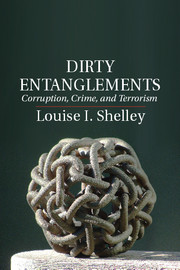Book contents
- Frontmatter
- Dedication
- Contents
- Figure, Maps, and Tables
- Acknowledgments
- Introduction
- Part I The Logic of Corruption, Crime, and Terrorism
- 1 Crime and Corruption behind the Mass Attacks
- 2 Corruption
- 3 The Evolution of Organized Crime and Terrorism
- 4 Environments, Global Networks, and Pipelines
- Part II The Diverse Businesses of Terrorism
- Index
- References
3 - The Evolution of Organized Crime and Terrorism
Published online by Cambridge University Press: 05 August 2014
- Frontmatter
- Dedication
- Contents
- Figure, Maps, and Tables
- Acknowledgments
- Introduction
- Part I The Logic of Corruption, Crime, and Terrorism
- 1 Crime and Corruption behind the Mass Attacks
- 2 Corruption
- 3 The Evolution of Organized Crime and Terrorism
- 4 Environments, Global Networks, and Pipelines
- Part II The Diverse Businesses of Terrorism
- Index
- References
Summary
A controversy arose at the sentencing of Jose Padilla, who was convicted in 2007 of diverse offenses, including conspiracy to murder, kidnap, and maim and providing material support for terrorism. Arrested in 2002, after landing in Chicago on a flight from Pakistan, he was first accused of being a suicide bomber. He spent three years in detention as an enemy combatant and eventually came to trial, five years after his original arrest. Padilla was accused of being trained by al-Qaeda after arriving in Pakistan in 1998.
But his sentence of seventeen years was challenged, and in 2011 a federal judge handed down a decision, saying that this sentence was too mild because it did not take adequate account of his criminal background, nor of his extensive terrorist training. Mr. Padilla started out on a criminal path early in his adolescence. Even though juvenile criminal records are sealed, the following has been determined about his criminal past, according to the presentence report prepared before his initial sentencing. The judge explained, “The government stated that Padilla was a career offender based on over 17 arrests, his participation in a murder while he was a juvenile, his offense for battery on law enforcement, and his weapons possession offense.” Subsequently, the judge explicitly referred to his murder conviction.
- Type
- Chapter
- Information
- Dirty EntanglementsCorruption, Crime, and Terrorism, pp. 97 - 131Publisher: Cambridge University PressPrint publication year: 2014
References
- 1
- Cited by



